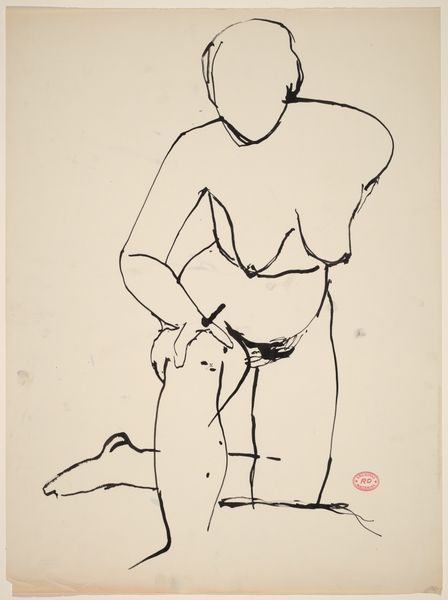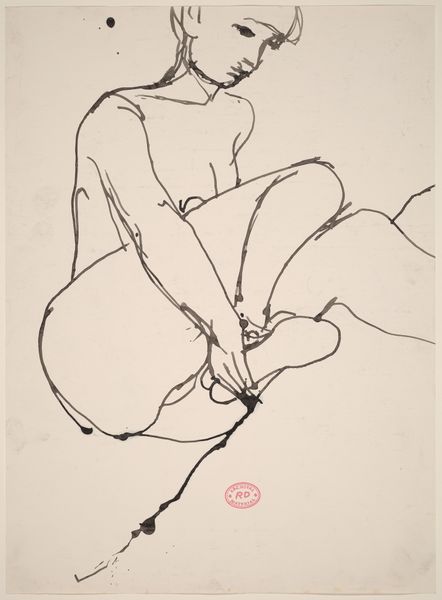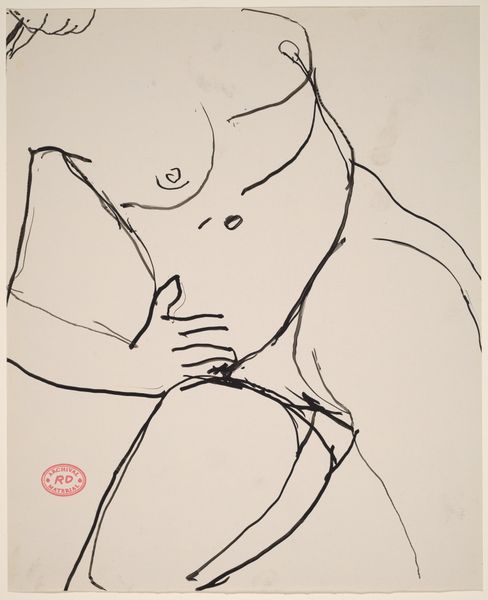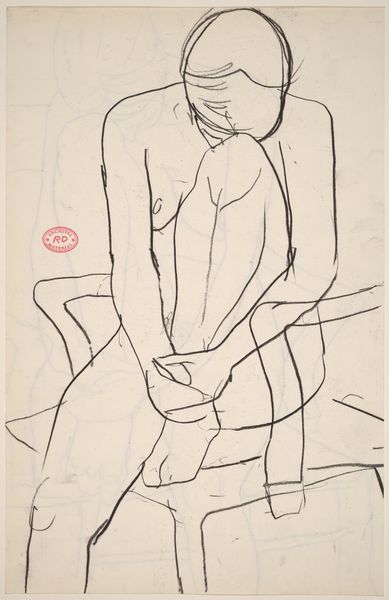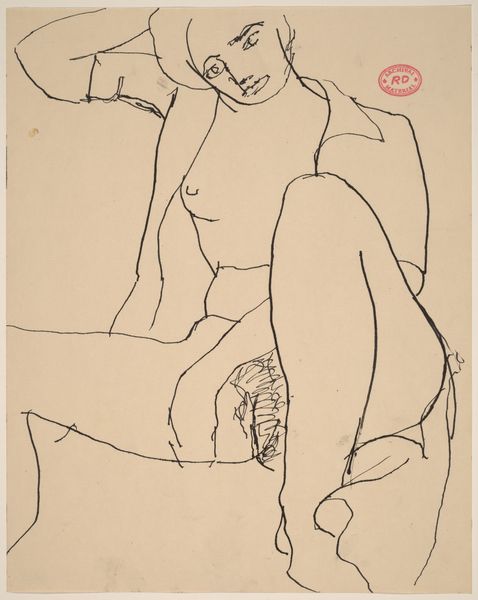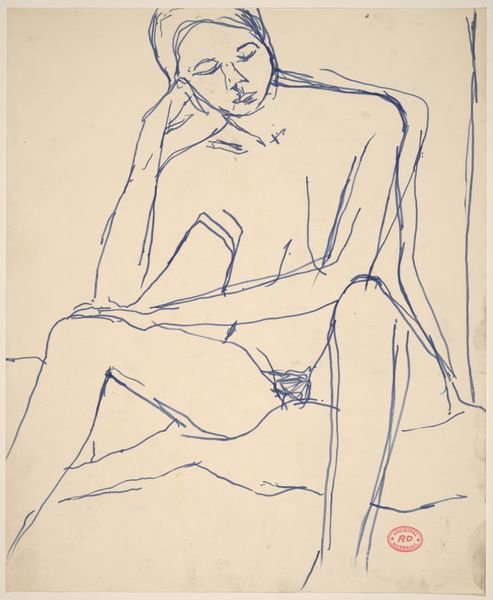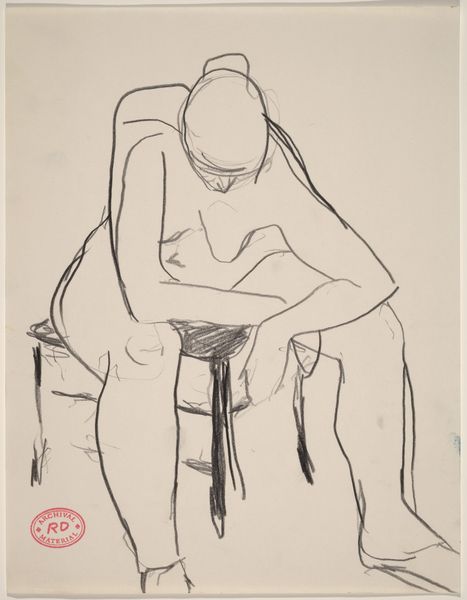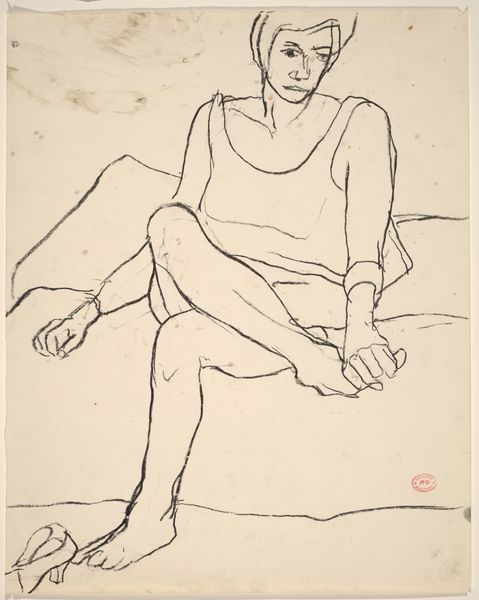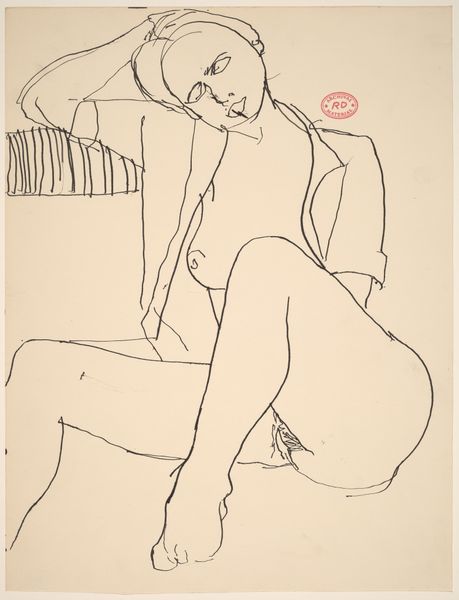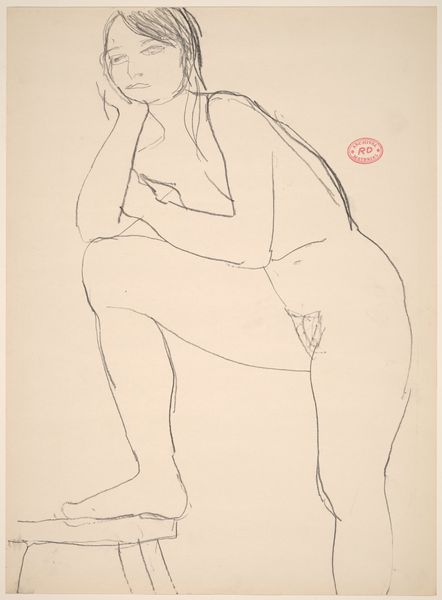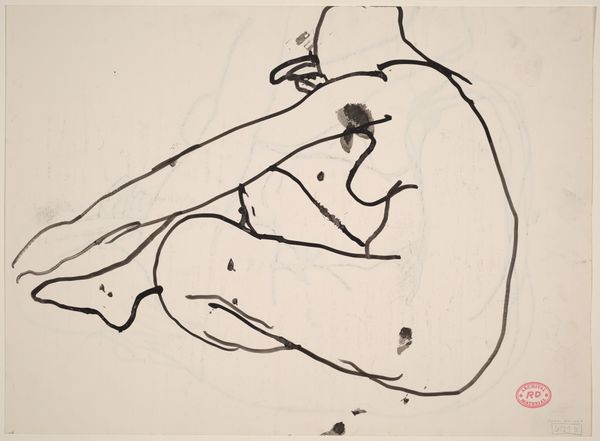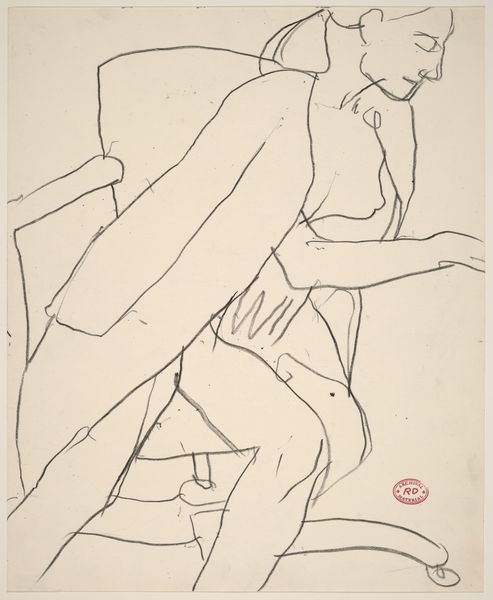![Untitled [seated female nude holding cup in right hand] by Richard Diebenkorn](/_next/image?url=https%3A%2F%2Fd2w8kbdekdi1gv.cloudfront.net%2FeyJidWNrZXQiOiAiYXJ0ZXJhLWltYWdlcy1idWNrZXQiLCAia2V5IjogImFydHdvcmtzLzdiZWJhZGI4LWQ1M2UtNDc4OC04M2IxLWRhMmZlMjFiN2FkMS83YmViYWRiOC1kNTNlLTQ3ODgtODNiMS1kYTJmZTIxYjdhZDFfZnVsbC5qcGciLCAiZWRpdHMiOiB7InJlc2l6ZSI6IHsid2lkdGgiOiAxOTIwLCAiaGVpZ2h0IjogMTkyMCwgImZpdCI6ICJpbnNpZGUifX19&w=3840&q=75)
Untitled [seated female nude holding cup in right hand] 1955 - 1967
0:00
0:00
drawing, ink, pen
#
portrait
#
drawing
#
ink drawing
#
pen sketch
#
figuration
#
bay-area-figurative-movement
#
ink
#
pen-ink sketch
#
pen
#
portrait drawing
#
academic-art
#
nude
Dimensions: overall: 40.6 x 27.9 cm (16 x 11 in.)
Copyright: National Gallery of Art: CC0 1.0
Editor: So, this ink drawing, "Untitled [seated female nude holding cup in right hand]," was created by Richard Diebenkorn sometime between 1955 and 1967. There’s a certain simplicity in the line work that I find very striking, almost… fragile. What draws your eye in this piece? Curator: The power resides primarily in the manipulation of line itself. Observe how Diebenkorn uses a sparse, almost hesitant, line to define form, creating a tension between presence and absence. Note also the variations in the weight of the line – heavier contours defining the figure's periphery, versus thinner lines suggesting internal modeling. Does that differentiation affect your sense of the figure's spatial presence? Editor: Absolutely. The heavier lines ground the figure, whereas the finer lines give a sense of light and shadow, implying volume without fully committing to it. How does the negative space contribute to the drawing? Curator: The negative space is critical. It's not merely the absence of line; it's an active element that shapes our perception. Notice how the expanse of untouched paper around the figure accentuates its isolation, emphasizing the vulnerability of the subject. The strategic use of empty space allows the eye to complete the form, engaging the viewer in a participatory act of perception. Editor: That makes so much sense! I was initially focused on the figure itself, but now I see how important the space around it is in conveying the overall feeling of the work. Curator: Precisely. Diebenkorn masterfully employs the fundamentals of line and space to achieve a delicate equilibrium between representation and abstraction, demanding we confront not just what is depicted, but also how it is depicted. Editor: I'll definitely look at drawings with more intention from now on. Thanks so much! Curator: My pleasure. Approaching art with attention to its formal elements can lead to a richer understanding and appreciation.
Comments
No comments
Be the first to comment and join the conversation on the ultimate creative platform.

